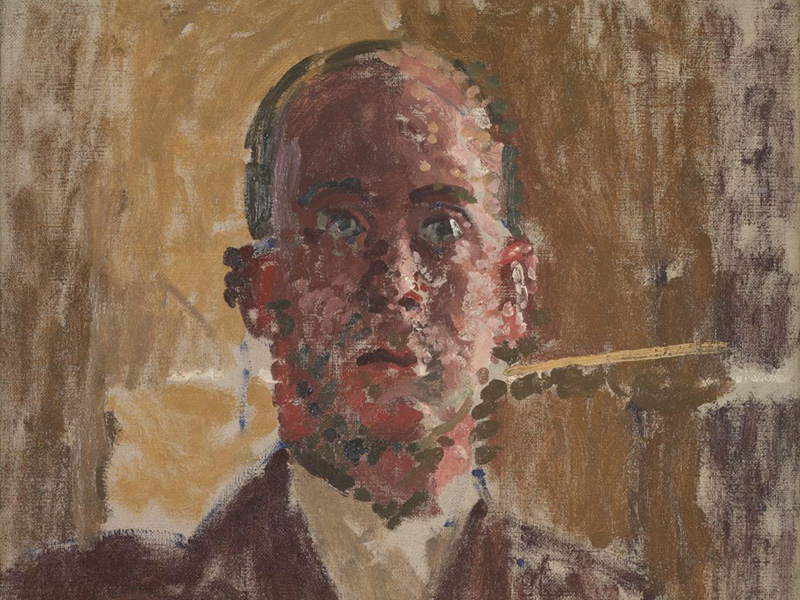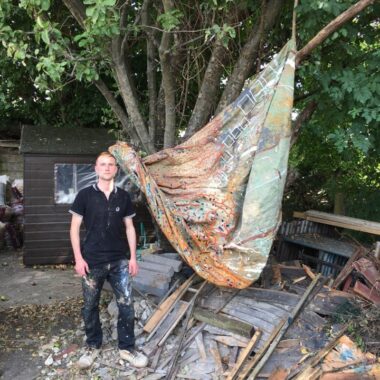London Group Archivist David Redfern reveals the early trials of The London Group, including losing our first President to Spanish Flu in 1919.
The London Group’s first exhibition was in March 1914, but by early 1919 The London Group had suffered a double whammy and was about to experience a third. The First World War had deflated the first rush of enthusiastic organisation as hostilities broke out only a few months after the Group’s first exhibition at the Goupil Gallery in March 1914. Many members were drawn into the war effort and consequently the Group could not hope to flourish as the founder members had wished. Then in 1917, after only five exhibitions, the Group was ejected from the Goupil Gallery partly because the owner, William Marchant, objected to the pacifist stance and actions of a number of London Group members and consequently the Group found itself without a public outlet. The third whammy was delivered by a virus, the so-called Spanish flu which carried off the Group’s first President, Harold Gilman, early in 1919. Gilman had been a member of the Camden Town Group and during the discussions to extend this alliance to form The London Group he had been elected as its first President to bind the disparate groups of artists together. He was often referred to as “the glue of The London Group”, affable, diplomatic, able to bring the warring factions together. Just before his death Gilman’s last important role was to complete a commission from the Canadian War Memorials Fund to paint Halifax harbour where in December 1917 a French ammunition ship had exploded with the loss of hundreds of lives. “Halifax Harbour” 1918, now in the National Gallery of Canada, Ottawa, was his largest painting measuring 198 x 336 cms. It was also his last.

With Gilman dead and no figure head elected to replace him the Group began to fall apart leaving the majority Bloomsbury artists to fill the power vacuum. Fellow London Group member Charles Ginner wrote in the preface to the March 1919 exhibition held in the Mansard Gallery at Heal’s, Tottenham Court Road, “His friends have lost in him, a man of extraordinary charm, a delightful companion with a keen sense of humour; art has lost by his death many beautiful pictures and much ripeness of knowledge which he would always have been ready to impart. He was one of the most important English painters of our generation.” Robert Bevan who had been the Treasurer until this time was given overall responsibility for running the organisation and it was not until 1921 that The London Group was led by another President, the painter Bernard Adeney. This arrangement did not seem to prevent the Group from showing work, indeed the Group organised two exhibitions a year until the mid 1920s.
Wikipedia’s entry states, “The Spanish flu, also known as the 1918 flu pandemic, was an unusually deadly influenza pandemic caused by the H1N1 influenza A virus. Lasting about 15 months from spring 1918 (northern hemisphere) to early summer 1919, it infected 500 million people – about a third of the world’s population at the time. The death toll may have been anything from 17 million to 50 million, and possibly as high as 100 million, making it one of the deadliest pandemics in human history. To maintain morale, World War I censors minimized these early reports. Newspapers were free to report the epidemic’s effects in neutral Spain, such as the grave illness of King Alfonso XIII, and these stories created a false impression of Spain as especially hard hit. This gave rise to the name ‘Spanish’ flu. The 1918 Spanish flu was the first of two pandemics caused by H1N1 influenza A virus; the second was the 2009 swine flu pandemic.” Lack of adequate hygiene and malnutrition after the war were given as reasons for the scale of the pandemic. Today’s figures give pause for reflection.
David Redfern LG, Jun 2020






